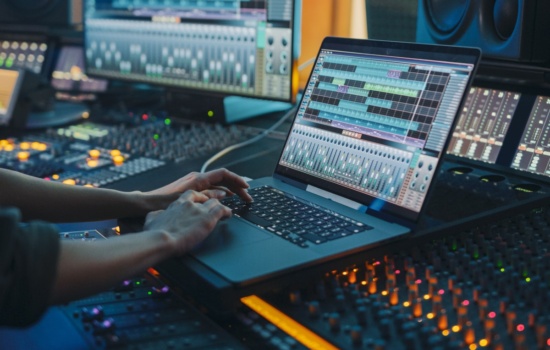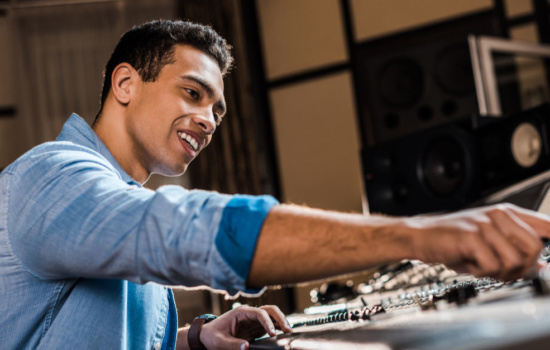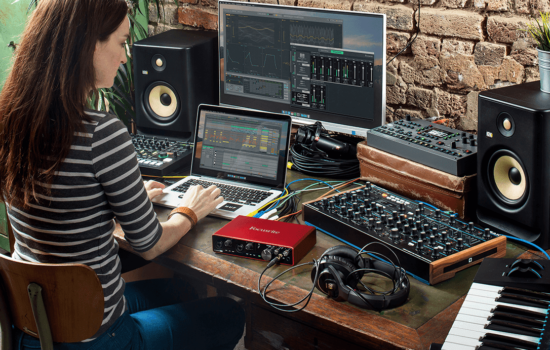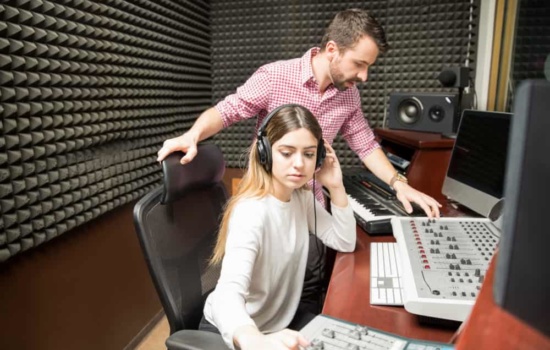Music Career Finder
Start Here:
Sound Designer
Career Overview
Sound designers create sound effects and immersive audio experiences in the worlds of film/TV, theater, concerts, and video games.
Alternate Titles
Audio Designer, Audio Artist, Sound Artist, Creative Sound Designer, Technical Sound Designer
Avg. Salary
$83,833 per year1
Salary Range
$65K to $101,5001
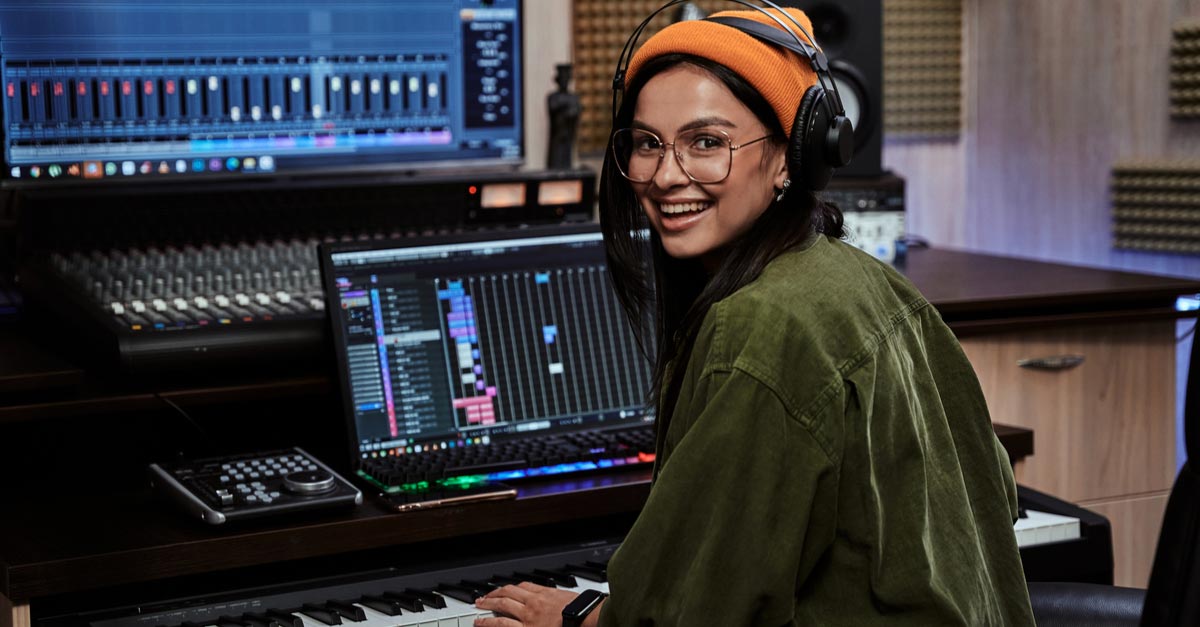
How To Become a Sound Designer
- A sound designer creates and manipulates audio for film, TV, video games, and theater
- A Foley Artist is a type of sound designer that records live sound effects to sync to visual media
- This career usually involves a mix of 8-hour work days and up to 12-hour work days
- You don’t need a degree but earning a bachelor’s in something music-related can be very helpful
- The average salary for a sound designer is about $83,833 per year and ranges from $65,000 to $101,500 per year
- Career Description
- Salary
- Career Outlook
- Career Path
- Experience & Skills
- Education & Training
- Sources
- References
Career Description
A sound designer creates and manipulates audio elements for film, television, video games, theater, and any other context that requires sound.
What Does a Sound Designer Do?
There are two main places where sound designers: in visual media and in theatre.
Sound designers in visual media:
- Work closely with directors, producers, composers, and other members of the creative team
- Create sound effects
- Edit dialogue
- Create music or incorporate pre-recorded music
- Do Foley artistry
- Make atmospheric audio
Sound designer David C. Hughes (Black Panther, Captain America: Civil War, Doctor Strange) said a lot of sound effects these days come from libraries of pre-recorded sounds.
“The way these jobs are typically done now is by taking from libraries of recordings you already have, libraries that you can either buy or you can go out and record,” he said.
“Say there’s a helicopter in your movie, so you go record a helicopter. A lot of times, what a Sound Designer is tasked with are those things that you can’t simply find a recording of and plug it in. If it needs to be a helicopter eighty years in the future or something, that’s more of a design task.”
Sound designers in theatre:
- Collaborate with the creative team
- Design soundscapes and effects
- Select or compose music
- Plan and set up sound systems
- Program sound cues
- Mix and balance live audio
- Troubleshoot and maintain sound equipment
Theatre in sound designer Gareth Owen (Andrew Lloyd-Webber’s CINDERELLA, Spring Awakening) emphasized the importance of someone in his role.
“The sound design in theatre is critical to the show,” he said. “Without it, the audience would not be able to hear the orchestra or the singing. Also, many of the sound effects are important for telling the story and for putting the audience in the right acoustic place.”
What is a Foley artist?
Foley artistry is a type of sound designer.
A Foley artist is responsible for creating and recording custom sound effects that match what’s happening on screen, like in a TV show or movie.
This involves working in a recording studio with tons of different props that re-create the sound of footsteps, door creaks, rustling clothing, and anything else that might be in a show or movie.
A Day In the Life of a Sound Designer
While every day can be different depending on the stage of the project and specific responsibilities, here’s what a typical day for a sound designer might include…
- Project meetings and planning
- Sound editing and mixing
- Foley recording (and re-recording)
- Music integration and/or scoring
- Ambient sound design
- Problem-solving and troubleshooting technical and creative issues
Salary
The average salary for a sound designer is about $83,833 per year and usually ranges from $65,000 to $101,500 per year1.
How Do Sound Designers Make Money?
Sound designers are usually self-employed, but they can get hired by a company as an employee.
The most common places that hire sound designers are:
- Theatres (regional, community, and professional companies)
- Touring productions
- Opera companies
- Dance companies
- Film and TV production studios
- Live event production companies
- Theme parks and attractions
- Video game studios
Because sound design is usually a freelance career, sound designers in the union have rates that “are pretty locked in,” according to sound designer David C. Hughes (Black Panther, Captain America: Civil War, Doctor Strange).
“[There’s] a union job I’m working on, and I think the sound editor rate is $63 an hour,” he said. “Plus there’s usually some overtime.”
But he said non-union jobs can pay somewhere around $40 an hour. Every project can be different.
The most successful sound designers command large fees from major studios or companies and typically also manage teams of people working on all aspects of audio production.
Most contracts are for a flat fee, also called “work for hire,” meaning the sound designer doesn’t receive royalties from the future revenues generated by the project.
Hey, what do you think about trying our new Music Career HelperMusic Career Helper really quick? It’s totally free and could help get your career moving fast! Give it a try. It’s totally free and you have nothing to lose.
Career Outlook
The career outlook for aspiring sound designers can be promising.
Yes, artificial intelligence music and sound effects are becoming more prevalent, but many projects need a very specific sound, song, or aural atmosphere. That’s where a human sound designer is highly valuable.
Like many other careers in music, it is a competitive landscape.
Sound designer Raison Varner (Borderlands 1-3) said you’ll have to work hard to make this a career.
He said when work is slower, he works a more normal 8-hour day.
But when things are busy, he may also work 9-12 hours per day for a week or two.
“Depending on the milestone, I’ll sometimes work a couple of Saturdays or a weekend or two in a row,” Varner said.
Career Path
If you want a career as a sound designer, you have to love working with sound, Lange said.
“Like anything, you choose to, you’ll only choose to if you truly love sound, the concept of sound, the science of sound, the emotional response of sound,” he said. “It’s a truly exciting world where the only real limitation is your imagination. The rest is up to you.”
Create a Portfolio
Hughes suggests setting up an online portfolio you can easily send to a film director or assistant director.
“…I think it’d be great to have your own personal Soundcloud or Vimeo page, or your own little splash page website that you can direct people to and say, ‘Here are a few examples of my work,'” he said.
Sound Designer in Visual Media
Production companies, film studios, game studios, and advertising agencies often hire sound designers for their projects.
So research companies in your area and reach out to ask about potential job openings, freelance opportunities, or even internships.
Video games are a common entry point for sound designers. Lange and Varner both started out working on indie video games, animation projects, and student projects.
Sound Designer in Theatre
Connect with directors, stage managers, and theatre professionals. Attend theatre productions, festivals, and workshops and try to meet the crew afterward.
Who you know could lead to your first position as a sound designer in theatre.
You could also apply for assistant sound designer or technician roles at regional theatres or on touring crews.
Experience & Skills
To succeed as a sound designer and/or a Foley artist, you’ll need a combination of technical skills, creative abilities, and relevant experience.
Here are the key skills and experiences you should focus on…
Editing and Mixing Audio
You’ll be cutting and layering audio and adding effects like reverb, delay, EQ. So you’ll need to know how to use a digital audio workstations (DAWs) to edit and mix audio.
These would be programs like Pro Tools, Logic Pro, Ableton Live, or Adobe Audition.
Recording
Recording live and digital sounds is a huge part of being a sound designer.
So you’ll need to understand the different types of microphones, their appropriate uses, and how to best capture different sounds.
You’ll also need to know how to use MIDI to create music and atmospheric sounds.
Pairing Audio With Video
Once you’ve recorded and/or edited audio, you’ll need to pair that with visual media (unless you’re working in theatre).
So you’ll need to know how to sync music and sound effects with visual elements using programs like Final Cut Pro, Adobe Premiere, or something similar.
Sounds In Your Everyday Life
Pay attention to the sounds in your everyday life. This will help you find inspiration in your work.
“What kinds of sounds make you feel lonely?” Hughes said. “What kinds of sounds make you feel scared? What kinds of sounds make you feel apprehensive like something’s going to happen? If you listen in your day-to-day life, you can sometimes hit an idea that you can use in the film.”
Education & Training
While you don’t need a degree to succeed as a sound designer, most sound designers attend college to study audio engineering, music production, film scoring, and/or sound design.
Sound Designer Degree
Varner said educating yourself in audio recording and editing can be crucial to your success.
“Beyond normal composition and orchestration training, it’s very important to get a solid education in audio engineering and music mixing,” he said. “I would also stress exploring and developing your craft in areas like electronic music production, guitar-based bands, etc.”
Hughes said there’s not one way to become a sound designer, but school can be very helpful.
“Once you’ve figured out what you want to do, try to see what kind of higher education opportunities there might be,” he said.
But he said hands-on learning is also very important.
“…Get your hands on the tools that people are using,” he said. “If you read about people doing sound design work and you’re interested in how they did it, you can get your hands on some of those tools and start to familiarize yourself with them.”
Sources
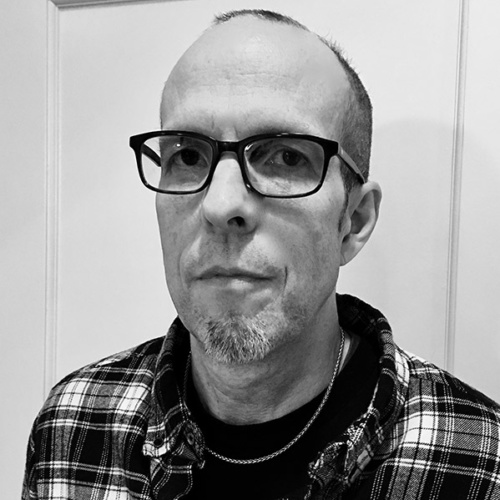
David C. Hughes
David began working at Skywalker Sound in 1996 and has worked on over one hundred feature films in his career at Skywalker. Originally from Texas, David has a degree in music performance and composition from NTSU. At the age of 30, David sold all his belongings and moved to San Francisco after reading that George Lucas had just purchased fifty digital audio workstations. Three months later David started working at Skywalker Sound.
To date, he has received 19 Golden Reel nominations and 3 Golden Reel Awards. He has worked on films by David Fincher, Robert Zemeckis, Steven Spielberg, Robert Redford, Ryan Coogler, and Mamoru Oshii, to name just a few. He has been able to continue his lifelong study of film sound under sound design greats such as Ben Burtt, Gary Rydstrom, Randy Thom, Chris Boyes, and many others.
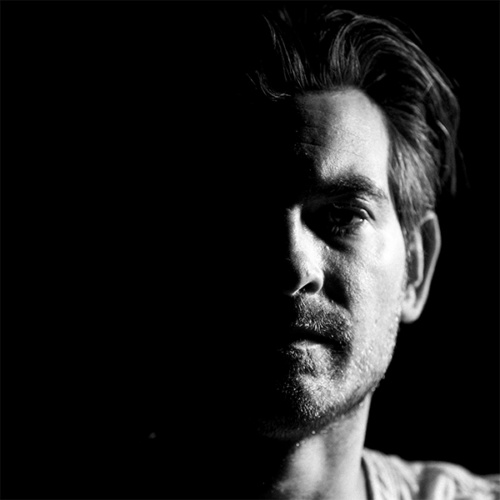
Matt Lange
Sound subsists in a constant state of transition. In fact, it morphs and multiplies so fast it might be the closest thing we have to evolution incarnate. Matt Lange bends, blends, recombines and reassembles live instrumentation, electronic production, and ethereal vocals into unpredictable and undeniable anthems with the heft of a sonic boom and the intimacy of a nocturnal orchestra. The New York-born and Los Angeles-based multi-platinum Producer, Composer, Songwriter, multi-instrumentalist, DJ, and artist progresses at the speed of sound on his 2020 full-length album Isolated. As life changes, his music does as well.
A dynamic and diverse trip ushered him to this point. Since 2007, Lange has left his mark on music, video games, film, and television. His production discography spans everything from BT’s Grammy® Award-nominated These Hopeful Machines to Thirty Seconds To Mars’s America, which bowed at #2 on the Billboard Top 200 in 2018. Beyond producing projects for Blake Lewis and Tania Zygar, Lange co-produced Glenn Morison’s Juno Award-nominated platinum-certified hit “Goodbye” [feat. Isolove].
Expanding his influence as both a composer and sound designer, his imprint resounds through blockbusters such as Ford v. Ferrari; Ready Player One; and Blade Runner: 2049 in addition to major video games including Counter-Strike Global Offensive; Tom Clancy’s Rainbow Six Siege; and Dota II. Not to mention, he delivered official remixes for the likes of The Crystal Method, deadmau5, Above & Beyond, and more.
Beyond performing at some of the biggest festivals in the world, he continues to prolifically build an immersive and innovative solo catalog comprised of several EPs in addition to albums such as Ephemera [2015] and Patchwork [2016]. Most recently, the 2019 EP, Space Between, received widespread critical acclaim. Of the title track, Billboard wrote, “He reaches a new melodic pinnacle with something downright danceable with a strong, infectious foundation.” However, Music Radar put it best, “To call him a triple threat would be to undersell him.”
The state of the world pushed Lange into new creative territory in 2020. As humanity slipped into Lockdown, he retreated inward. For eight weeks straight, he wrote, recorded, and dropped a pair of tracks in seven-day intervals. Plucking titles like “Morbidly Obese,” “Truth Over Facts,” and the starkly bleak “The Children Are Dying Too” right from the headlines, this undertaking siphoned the hysteria of cable news, the fear of a terrified society, and unrivaled loneliness into what would become Isolated. Typically sleeping only four hours per night, he’d chug coffee and create past sunrise with an unparalleled turnaround time. Moments like “But The Loneliness Is Killing Me” reflect his headspace at the time with its icy and distant production and slow drip of clean guitar and organic percussion.
“When the Pandemic hit, Hollywood shut down,” Lange recalls. “Any film work was gone. Live shows were gone. Isolated was how I kept my sanity. I was scared to visit my friends, so I was absolutely and unequivocally by myself. I obsessively channeled everything into this. It was incredibly cathartic though. Creating this concept record kept me going. I’m so relieved and proud of this.”
Isolated arrived October 27th- on the eve of the 2020 election.

Gareth Owen
Gareth Owen Sound is an eight-time Tony and Olivier-winning and nominated Sound Designer.
Led by Gareth Owen, our sound can be heard all over the world including on Broadway, in Las Vegas and in London’s West End. Over 30 million people have enjoyed a show with our sound design.
Our shows have won over a hundred awards including major Olivier Awards for Come From Away, Memphis and Merrily We Roll Along and Tony Award nominations for A Little Night Music and End of the Rainbow. Our sound for Come From Away recently won the inaugural What’s on Stage Award and Outer Critics Award. Gareth himself is the proud recipient of the prestigious Sound Engineer of the Year Award at the annual ProSound Awards.
We count the best Associates, Engineers and Operators as part of our team, in London, New York and across the globe.

Raison Varner
Raison Varner is a Senior Sound Designer and Composer at Gearbox Software. Games he has worked on include Borderlands, Borderlands 2, Borderland 3, Prey, Red Faction: Guerilla, Saint’s Row 2, and Aliens: Colonial Marines.
His work as a Composer and Sound Designer has been profiled by Your Classical and his work as Music Director on Borderlands 3 was profiled by WSHU Public Radio.
References
- 1. "Sound Designer Salary". ZipRecruiter. published: Nov 13, 2024. retrieved on: Nov 20, 2024
